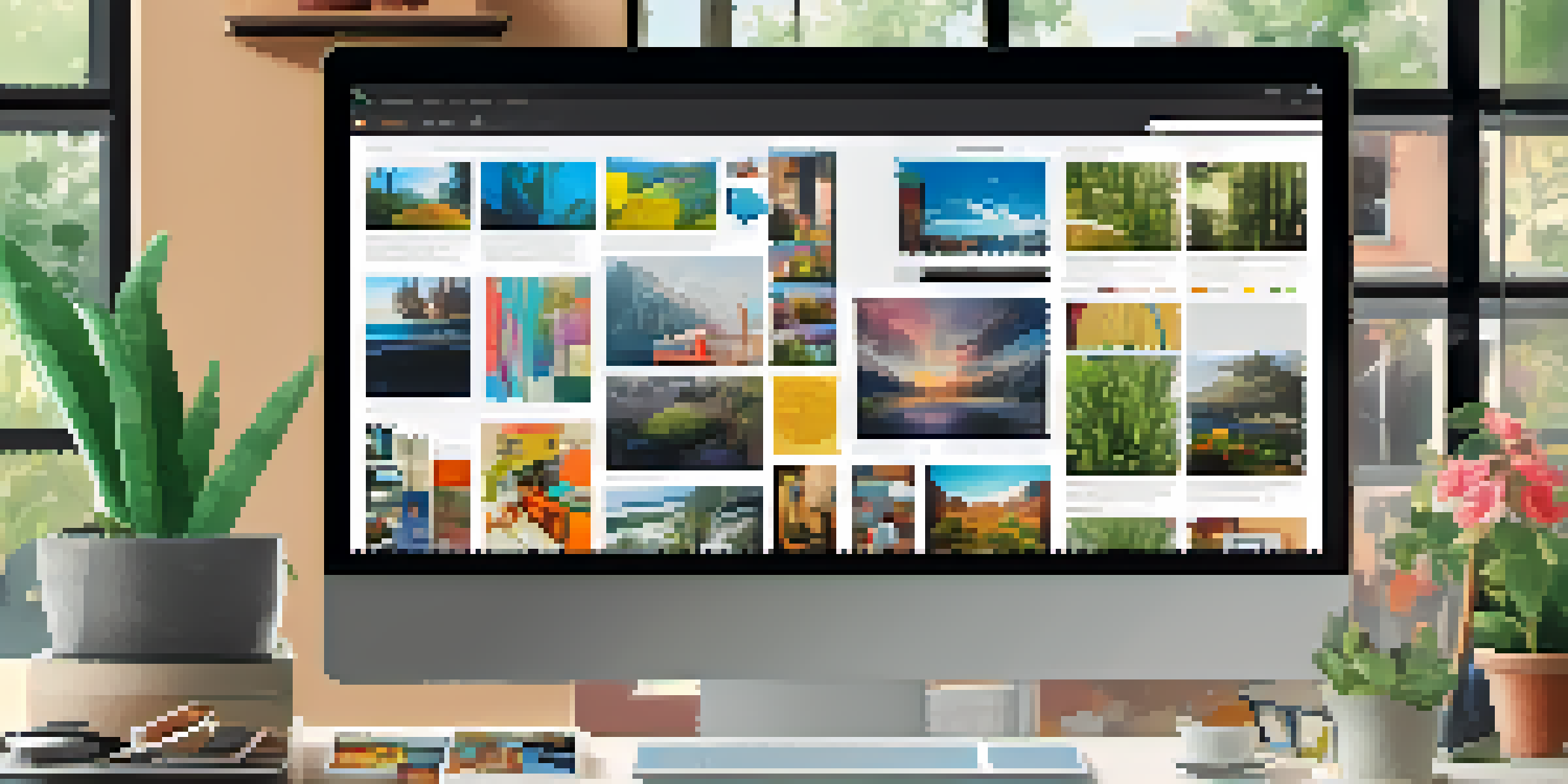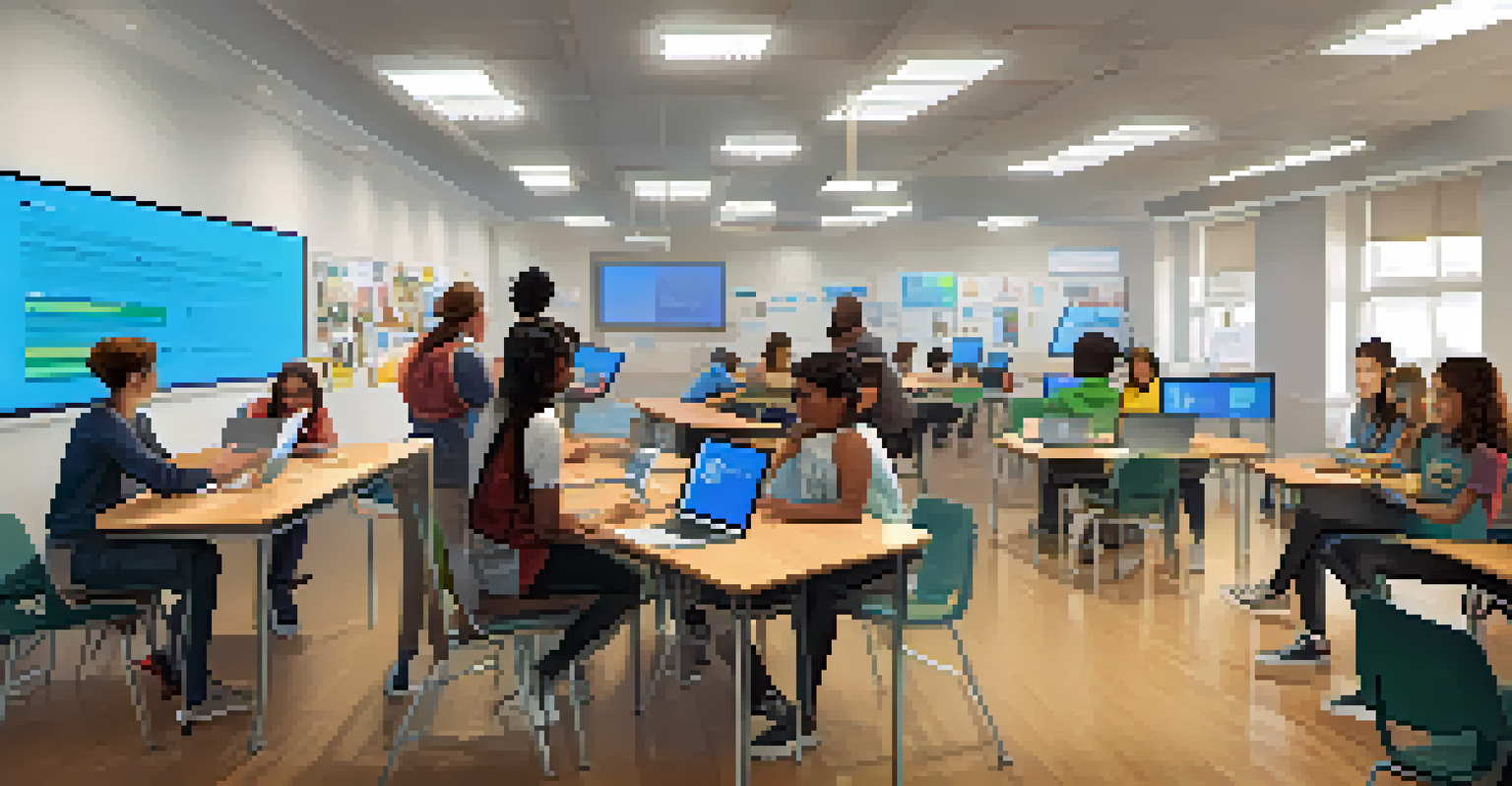Digital Portfolios: A Reflection of Student Learning Styles

Understanding Digital Portfolios and Their Purpose
Digital portfolios are online collections that showcase a student's work, achievements, and learning journey. Unlike traditional portfolios, they provide an interactive platform for students to present their skills in various formats, such as videos, images, and written documents. The purpose of these portfolios is not just to display accomplishments but also to reflect on personal growth and learning styles.
Digital portfolios provide a dynamic platform for students to showcase their skills and reflect on their learning journey.
By creating a digital portfolio, students engage with their learning more deeply, evaluating their progress over time. This process encourages self-assessment, enabling students to identify strengths and areas for improvement. Ultimately, digital portfolios serve as a tool for both self-reflection and showcasing one's unique educational narrative.
Moreover, digital portfolios can be shared with teachers, peers, and future employers, providing a comprehensive view of a student's capabilities. This accessibility fosters meaningful connections and opportunities, making them an essential part of modern education.
The Role of Learning Styles in Digital Portfolios
Learning styles refer to the various ways in which individuals absorb, process, and retain information. The most common models categorize these styles into visual, auditory, and kinesthetic learners. Digital portfolios cater to these diverse learning preferences, allowing students to express their understanding in a format that resonates with them.

For instance, visual learners may prefer to include graphics or videos that illustrate their thought processes, while auditory learners might opt for podcasts or recorded presentations. Kinesthetic learners can showcase projects that demonstrate their hands-on skills, providing a richer context to their learning experience.
Digital Portfolios Enhance Learning
Digital portfolios provide an interactive platform for students to showcase their skills, reflect on their growth, and engage more deeply with their learning.
By accommodating different learning styles, digital portfolios promote inclusivity and ensure that every student can present their best work. This adaptability not only enhances individual expression but also encourages collaboration and understanding among peers with varying learning approaches.
Benefits of Digital Portfolios for Students
Digital portfolios offer a multitude of benefits that extend beyond mere presentation. One significant advantage is that they foster a sense of ownership over one's learning. When students curate their content, they become more invested in their education and more motivated to pursue excellence.
Creativity is intelligence having fun.
Another benefit is the development of critical digital skills that are essential in today's job market. As students create, organize, and share their portfolios, they gain experience with technology, enhancing their digital literacy. This experience prepares them for future academic and professional endeavors.
Additionally, digital portfolios provide a platform for reflection, allowing students to assess their learning processes. By revisiting and revising their work, they can celebrate achievements and learn from setbacks, making the learning journey more meaningful and personalized.
Incorporating Feedback into Digital Portfolios
Feedback is a crucial component of the learning process, and digital portfolios facilitate this exchange effectively. Teachers can provide comments and suggestions directly on students' portfolios, making it easier for students to understand their strengths and areas for growth. This immediate feedback loop encourages continuous improvement.
Moreover, peer feedback is another valuable aspect of digital portfolios. Students can review each other's work, offering constructive critiques and support. This collaboration not only enhances learning but also builds a sense of community among classmates.
Inclusivity Through Learning Styles
By accommodating various learning styles, digital portfolios allow students to express their understanding in formats that resonate with them, fostering inclusivity.
Incorporating feedback into digital portfolios creates a rich dialogue about learning. It empowers students to take charge of their educational journey while fostering a collaborative environment that values diverse perspectives.
Showcasing Creativity Through Digital Portfolios
Creativity is an essential skill for problem-solving and innovation, and digital portfolios provide an excellent outlet for students to express their creativity. Students can experiment with various multimedia elements, such as animations, infographics, and interactive features that showcase their work in unique ways. This freedom of expression can lead to a more engaging and memorable presentation of their learning.
By encouraging creative exploration, digital portfolios help students develop their personal brand. They can design their portfolios to reflect their interests, passions, and learning styles, making their work truly their own. This personal touch can set them apart in academic and professional contexts.
Additionally, the creative process itself can enhance learning. As students brainstorm and design their portfolios, they deepen their understanding of the subject matter, reinforcing their knowledge in a fun and engaging way.
Challenges Faced While Creating Digital Portfolios
Despite the numerous benefits, students may encounter challenges when creating digital portfolios. One common issue is the technical aspect; not all students are comfortable using digital tools and platforms. This discomfort can lead to frustration and discourage them from fully engaging in the portfolio development process.
Another challenge is the potential for information overload. With so many options available for showcasing their work, students might struggle to choose what to include. This indecision can hinder their ability to create a cohesive and focused portfolio that accurately represents their learning journey.
Preparing for a Digital Future
As technology advances, digital portfolios are becoming essential in education, equipping students with critical digital skills for their future academic and professional endeavors.
Finally, there is the challenge of time management. Balancing portfolio creation with other academic responsibilities can be daunting. Students need guidance on how to allocate time effectively to ensure their portfolios are a true reflection of their skills and efforts.
The Future of Digital Portfolios in Education
As technology continues to evolve, digital portfolios are becoming increasingly integral to education. They not only align with modern teaching practices but also prepare students for a digital future. Educators are recognizing the importance of integrating digital portfolios into the curriculum, making them a staple in learning environments.
The future of digital portfolios also includes enhanced features, such as virtual reality experiences and artificial intelligence tools that can analyze and recommend improvements. These advancements will further enrich the portfolio creation process, providing students with even more ways to express their learning.

Ultimately, digital portfolios are set to transform how students showcase their learning styles, skills, and creativity. As we embrace this shift, we can expect to see more personalized and engaging educational experiences that prepare students for success in an increasingly digital world.